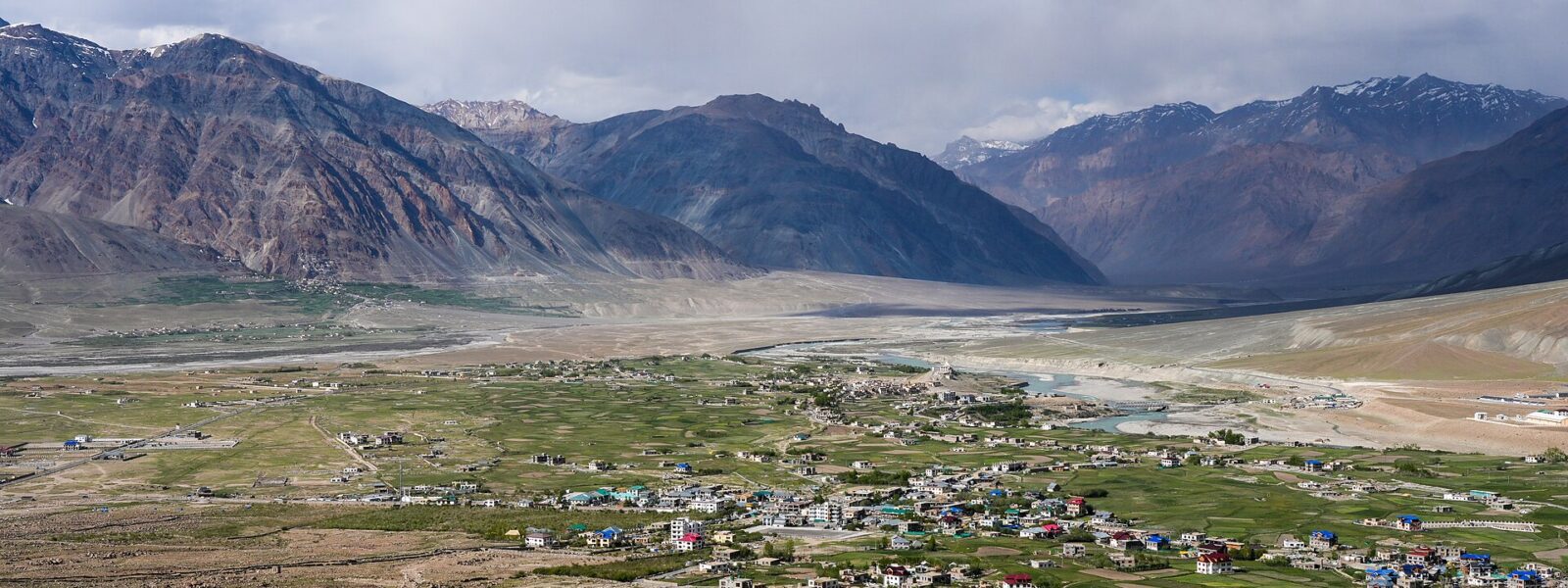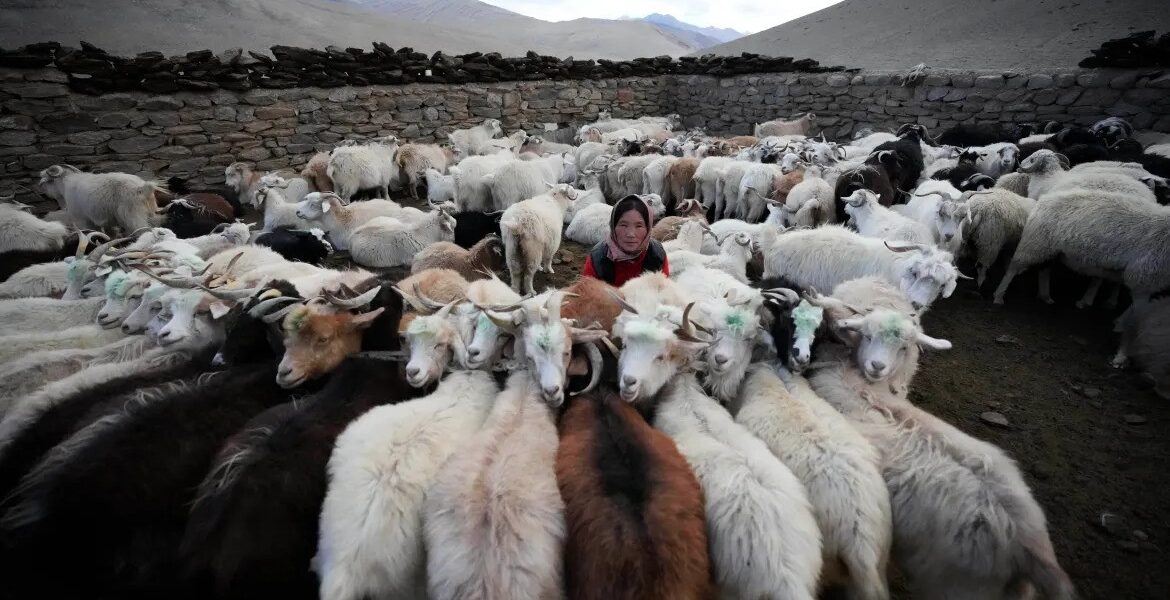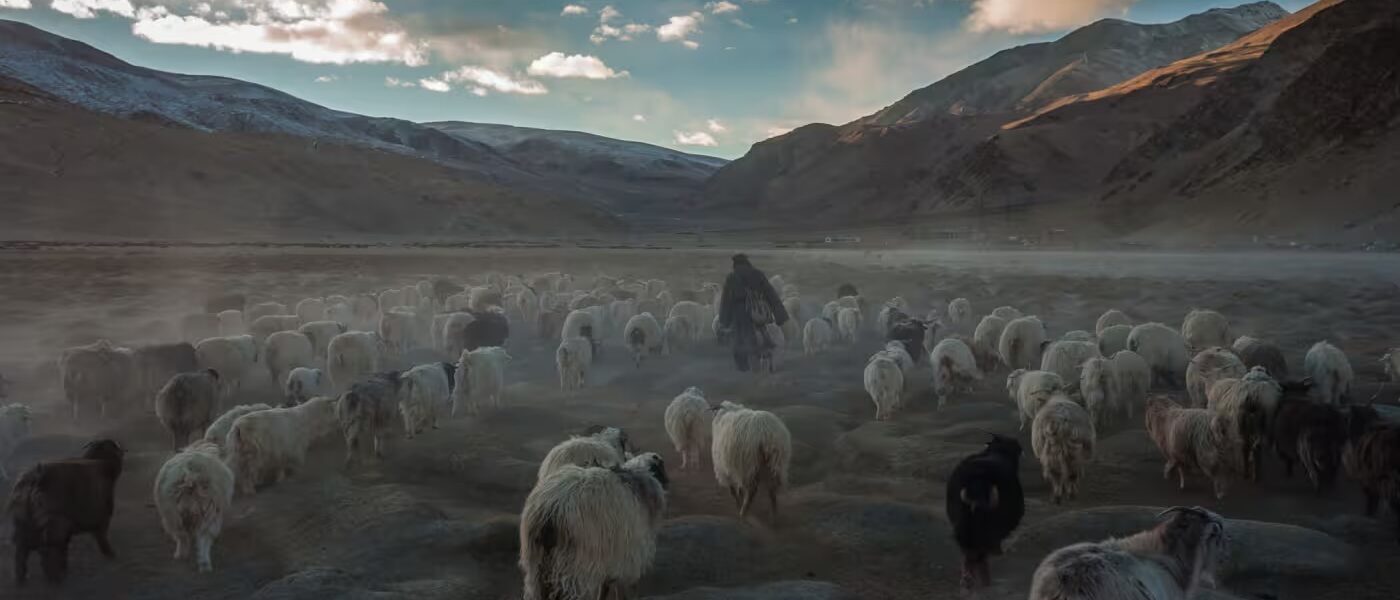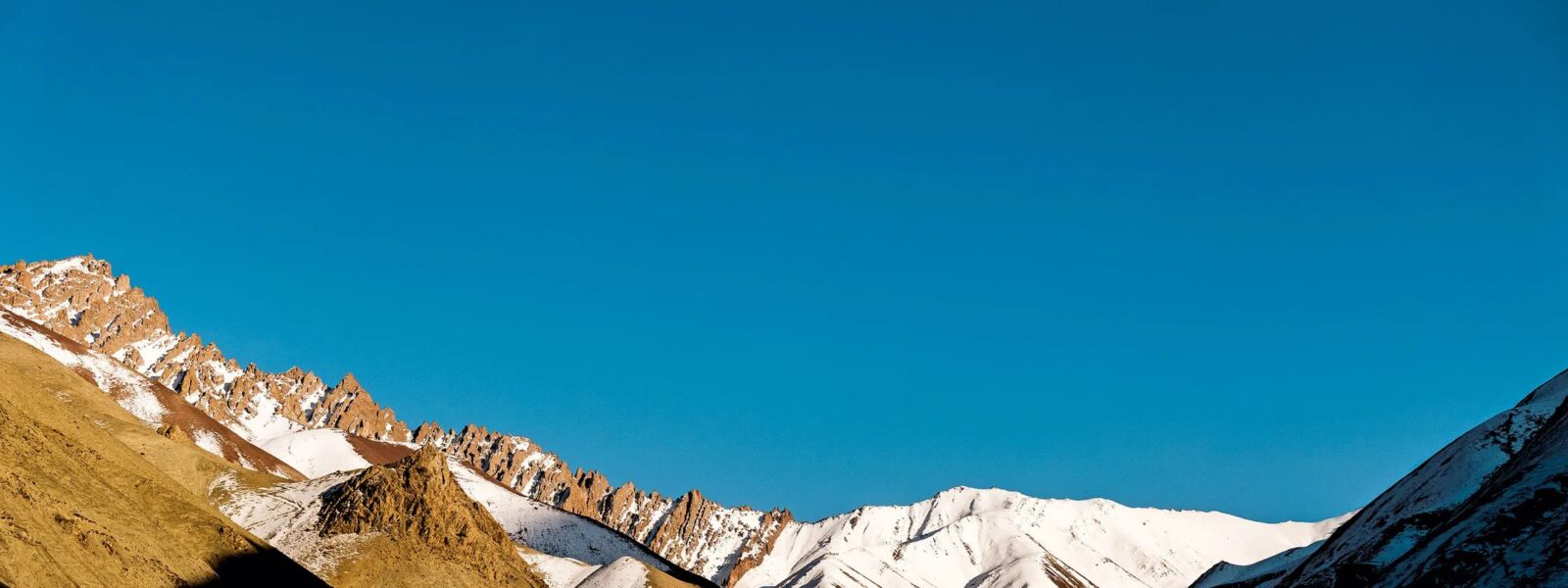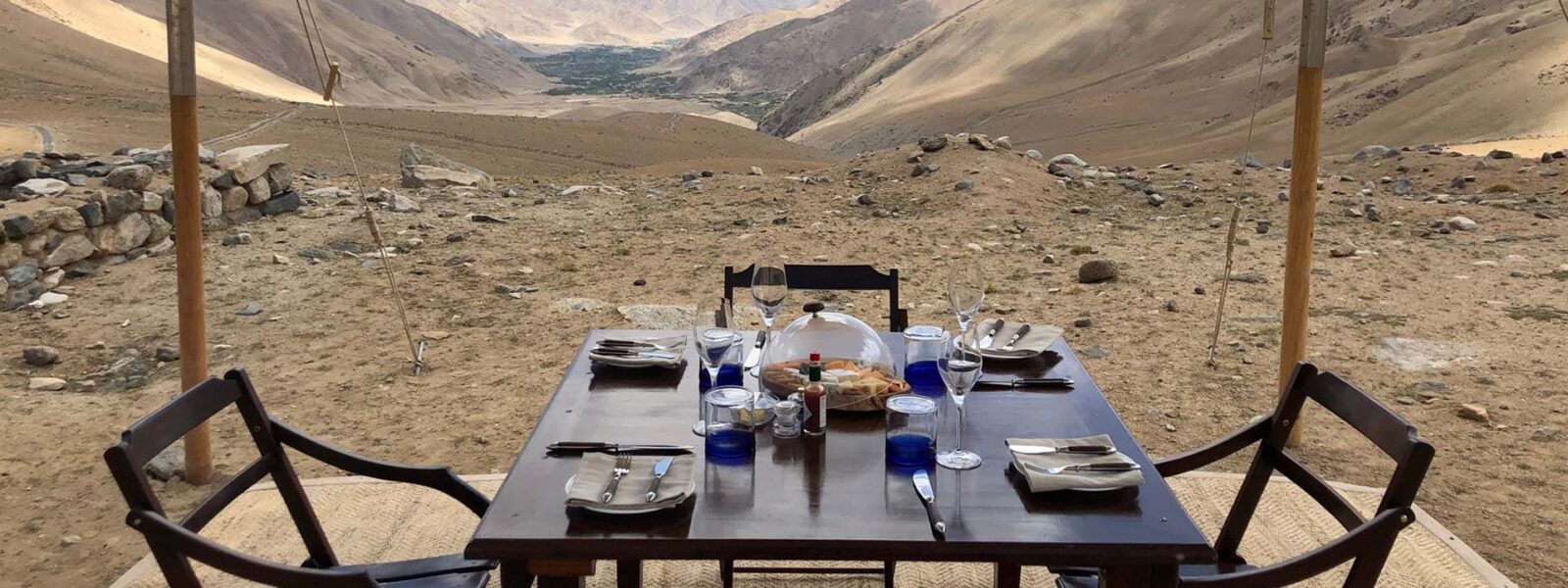Prologue — Where the Silence Speaks Louder than Words
It was not the peaks that drew me, but the hush between them. Ladakh is the kind of place where wind speaks more than people, and shadows carry the weight of stories never written down. For most, it appears as a high-altitude wilderness on a map. For those who listen closely, it is something else entirely — a murmuring archive of vanished footsteps and whispered truths.
I had arrived at the cusp of winter. The air was thin, the sky crystalline. There was no road noise, no idle chatter, not even the barking of dogs. Just a ringing stillness — and in that stillness, a sense of memory. Not mine, but the land’s.
I came here not to escape, but to listen. To listen to what the sky had not told, and what the valleys still remembered. In the shadowed alcoves of Buddhist gompas, over butter tea in a shepherd’s tent, and on lonely trails that connect stone to sky, I found tales. Not loud ones. Not the kind printed in guidebooks or sung in tourist homestays. These were stories murmured by the land itself.
Europeans often look to the East for revelation, expecting spiritual clarity, bright temples, or the pulse of incense. Ladakh offers something different. Something raw and unfinished. It doesn’t explain itself. It makes you work for each insight, each fragment of understanding. Perhaps that’s why these legends lingered — untouched by marketing, insulated by altitude, and kept alive not by books, but by repetition in the quiet spaces between conversations.
“Tales the Sky Never Told” is not a catalogue of folklore. It is a journey through terrain where myth and geography are woven into one. Where ancient footsteps are fossilized in glacial mud, and silence becomes a credible witness. These are not parables; they are lives half-remembered, unprovable, yet strangely credible.
This series does not aim to verify or decode. I am not here as an anthropologist or spiritual seeker. I am a collector of echoes. These columns are field notes from that pursuit — of visions glimpsed in incense smoke, of voices trailing from gompa walls, of faces seen once and never again.
Welcome to the stories you weren’t meant to hear. Welcome to Ladakh, where even silence has a memory.
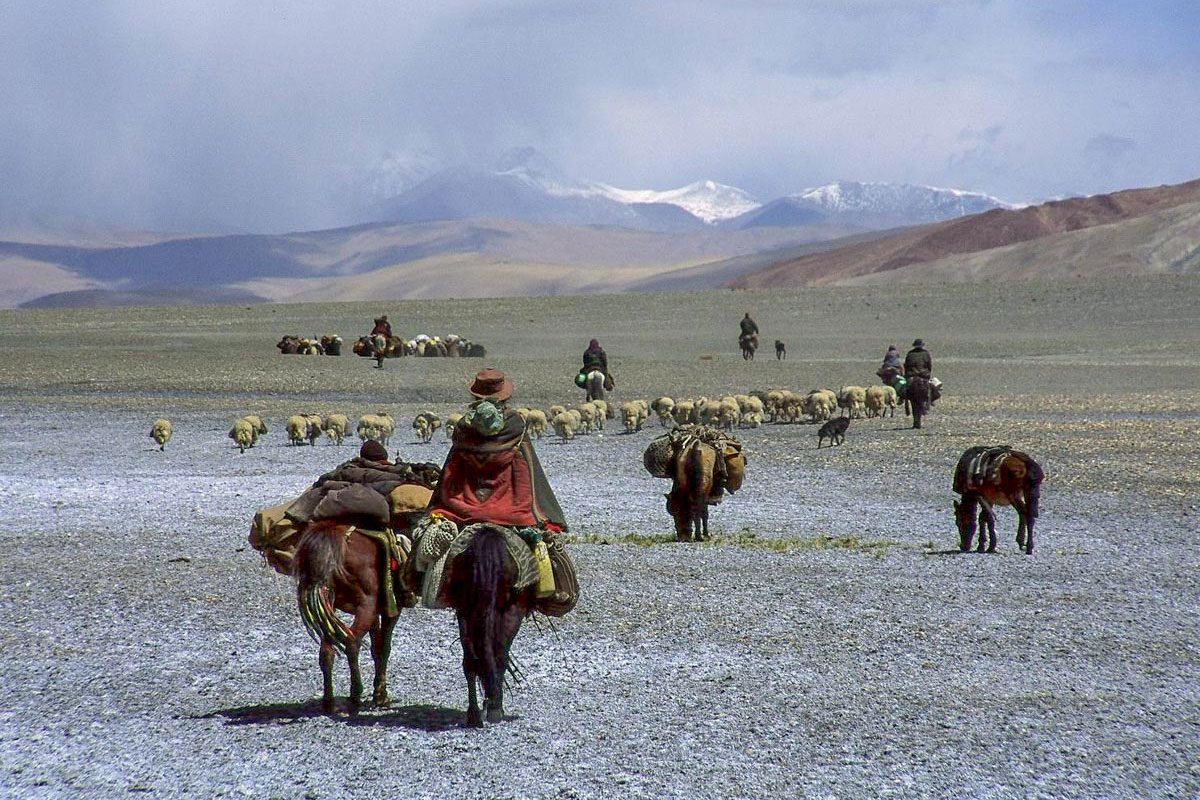
The Jesus of Hemis: A Monk Who Knew Too Much?
There is a monastery above Leh, built against a cliff as if leaning into the past. Hemis is not the most ancient of Ladakh’s gompas, but it is the most whispered-about. Not for its artwork or architecture — though those are sublime — but for a story that slips between religion and rumor like wind beneath a monastery door.
In 1894, a Russian adventurer named Nicolas Notovitch arrived at Hemis and claimed to have found something astonishing: a Tibetan manuscript detailing the "lost years" of Jesus Christ. According to him, it told of a young man from the West — called Issa — who studied Buddhism in India and Tibet before returning to his homeland. Notovitch published his account in Paris, and the Western world flinched. Could the Messiah have walked the same dusty courtyards I now stand in?
The monks I spoke to at Hemis smile politely when asked about Notovitch. They shrug, they gesture to the prayer flags, they speak of impermanence. But one elder, his eyes milky with time, said something I cannot forget:
“Some stories are not hidden. They are simply not repeated.”
Ladakh is full of these silences — places where myth and history overlap, and no one is eager to draw the boundary. Western minds often demand documentation, citation, clarity. But in these high places, the truth may live not in the fact, but in the faith.
Tourists still come, asking about Jesus. Some whisper it into guesthouse conversations, others bring it bluntly to the monastery gates. But Hemis doesn’t confirm. Nor does it deny. Instead, it breathes, it chants, and it lets the wind answer.
For Europeans raised on biblical certainty, this ambiguity is maddening. Yet here, it is natural. A man may have walked these paths. Or not. The importance lies not in whether he did, but that the story remains alive — retold in low voices and incense smoke, somewhere between belief and mountain silence.
And so I stood in the shade of Hemis, not to search for Christ, but to listen for a voice older than doctrine. I heard nothing. But the silence was not empty. It was full of something else — something I could not name, yet could not forget.

The Cave of the Oracle: Whispered Prophecies from the Wind
On a cold ridge above the Indus, far from the better-paved routes of Ladakh, stands a monastery that speaks once a year — and never in its own voice.
Matho Monastery is known less for its architecture than for its oracles. Every spring, during the Matho Nagrang Festival, two monks volunteer to be vessels. For weeks they isolate themselves in darkened meditation chambers. Then, in a moment that belongs more to the shamanic than the monastic, they emerge transformed. Their eyes widen, their gestures become erratic, and a voice that is not their own begins to speak.
I had arrived just as the drums started.
There was no electricity in the room, only yak-butter lamps. The monks had emerged, dressed in ritual regalia that blurred the line between priest and prophet. One of them, a slender man with a calm face and now wild gestures, was speaking in tongues. I did not understand the words — neither did most Ladakhis present. But the elders nodded. Occasionally, they wept.
What he said was not recorded. It never is. The prophecy is ephemeral — meant for the moment, not the archive. It may speak of sickness, floods, border tensions, or the fate of a single child. Or of nothing. The prophecy is not always coherent. But coherence is not the point.
I spoke to a villager named Tsering afterwards. He remembered a year when the oracle warned of a harsh winter. The glaciers did not melt that year, and cattle perished. Another year, the oracle named a man accused of theft. He left the valley the next morning.
There is no proof. But there is memory.
Westerners often ask whether the monks are faking it. Whether this is performance, trance, or madness. But the question misunderstands the setting. In Ladakh, belief is not binary. It exists on a spectrum — from certainty to utility, from tradition to survival. The oracle speaks because someone must. Because the valley listens better when the voice is not one of its own.
As I walked out of the monastery into the dry wind, I noticed how the mountains seemed to lean in, as if listening too. Somewhere between religion and ritual, theatre and truth, I had witnessed something. Not seen. Not understood. But witnessed.
In Ladakh, that is often enough.

UFOs Over the Changthang: The Watchers in the Sky
They say the sky is different in the Changthang. It’s not just wider — it watches you.
This is the far edge of Ladakh, where the altitude breaks breath, and salt lakes shimmer with an alien light. Near Pangong Tso and the high plains of Hanle, I began to hear stories that had nothing to do with monasteries, oracles, or gods. They were about lights — fast, silent, and wrong.
The locals have no word for UFO. Instead, they speak of "sky visitors". Old herders describe flashes of white darting over the mountains at impossible speeds. Monks at remote outposts speak quietly of orbs that hover without sound, only to vanish with a pulse of heat. Soldiers, too, though less poetic, have filed reports — usually ignored.
At the Indian Astronomical Observatory in Hanle, I spoke with a technician who asked not to be named. “We get calls from army posts. Lights spotted. Coordinates. They never show up on our systems.” When I asked if he believed in aliens, he laughed, but not completely. “Something is flying. What it is, I won’t pretend to know.”
One particular tale stayed with me. A young nomad, perhaps fifteen, told me he had seen a figure — not a light, but a form — descend behind a ridge during a lunar eclipse. No sound, just a sharp wind. When he went to look the next morning, the sand was scorched in a perfect circle, but there were no tracks.
I asked him what he thought it was.
He replied, “Not a god. Not a plane. Something else.”
European readers may scoff. But consider this: Ladakh has been watching the sky for centuries. Its monasteries are aligned to stars. Its festivals follow lunar patterns. The stories of lights above are not new — only the language we use to describe them is.
Could these be drones from across the border? Perhaps. Could they be tricks of the high-altitude light? Possibly. But the legend persists, because it fills a gap. It speaks to the feeling you get at 4,500 meters above sea level, when the stars are so close they no longer feel friendly.
Not everything in Ladakh wants to be known. Some things just want to be seen, once, and never explained.
The sky over Changthang remains quiet — but not silent.
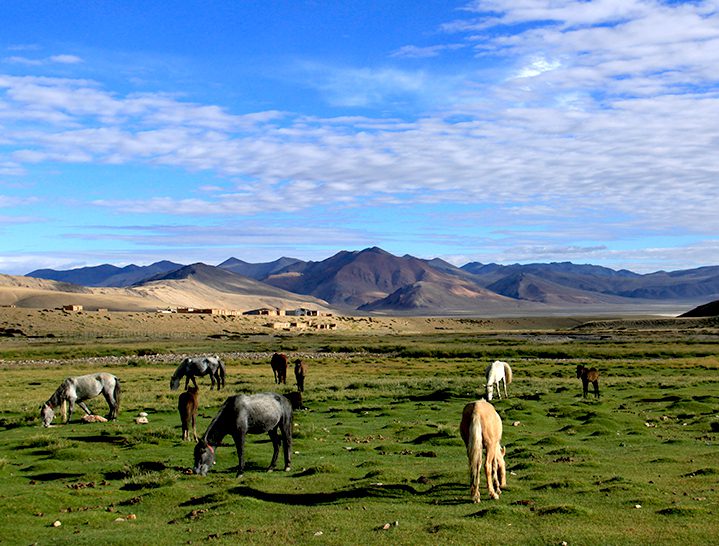
The Yeti in the Ice Wind: Tracks in Snow, Whispers in Wind
In the Nubra Valley, the wind does not howl — it hums. And sometimes, when the cold deepens past the threshold of human sound, it carries another frequency. One of presence.
The locals call it “Gyalpo Chenmo”, the Great King. Not a monster. Not a ghost. Something in between. The Western world knows it as the Yeti, or the Abominable Snowman — a name that says more about us than about it.
I had come north from Sumur on foot, following a nomadic shepherd and his son into the high pastures. It was April, and the snow still clung to the shadows. As we crossed a ridge, the boy stopped. He pointed downward, into a patch of untouched snow. There, spaced evenly, were prints. Not paw prints. Not human. Large, ovular, pressed deep and straight.
He didn’t speak. He only looked.
That night in their yak-hair tent, over a fire made of dung and driftwood, I asked the father about the tracks. He shrugged.
“It walks alone. It is not to be disturbed. It is older than monks.”
He told me of nights when yaks go missing without trace. Of sounds like two stones being knocked together. Of caves that no one enters, and valleys where compasses spin. Not once did he say the word Yeti. He didn’t need to. It was not a name; it was an understanding.
European fascination with the Yeti tends toward the forensic: plaster casts, genetic samples, thermal imaging. But none of that matters in Ladakh. Here, what is important is not whether the creature exists, but that the land believes it does.
In Leh, I met an old army officer who claimed to have seen it — briefly — near Siachen Glacier. He refused to go into detail. “Some things we let remain nameless,” he said, “because they are not meant to come down from the mountain.”
Belief in the Yeti is not a superstition — it is a boundary marker. It tells you where not to go, where not to build, what to respect. In a place where survival depends on harmony with what cannot be controlled, such beliefs are not optional. They are essential.
The wind rose that night as I lay in the tent. It passed across the flaps like a hand over a drumskin. I thought of the tracks. I thought of the silence. And I thought that sometimes, to be believed in is the only form of existence that matters.
Out here, you don’t ask if the Yeti is real. You ask if the mountain still feels watched.
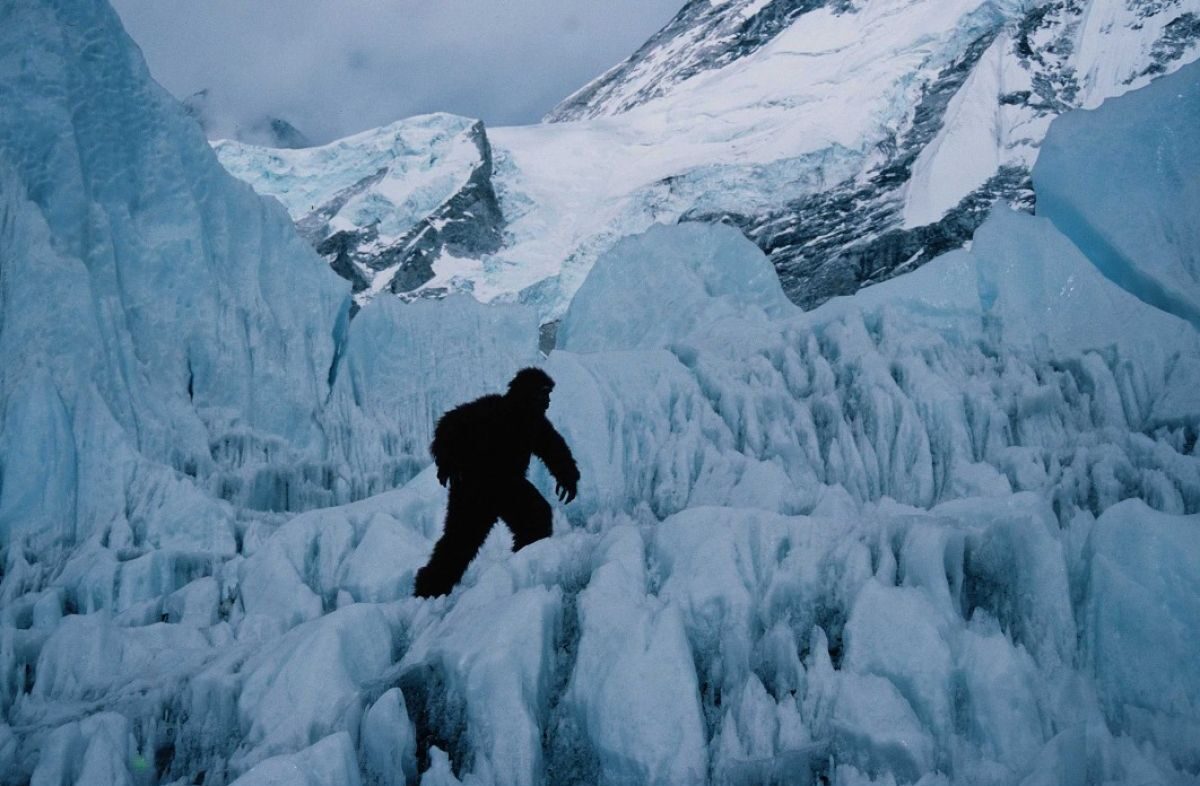
The Oracles of Lamayuru: Children of the Moonland
If the earth ever tried to imitate the moon, it would choose Lamayuru.
Rising out of pale, eroded cliffs like a fossilized wave, Lamayuru Monastery overlooks a landscape so otherworldly that the locals simply call it “Moonland”. But what fascinated me was not the geology — though it is surreal — nor the monastery’s age, which dates back over a millennium. It was the women who see things.
I was told of them by a pilgrim from Srinagar: widows, hermits, and former nuns who live above the village in crumbling stone huts. They fast for days, drink only snowmelt, and sleep in caves. And then they dream.
The dreams, I was told, are not like ours. They do not come from the past, but from what has not yet happened. In their trances, they see floods, famines, deaths — and sometimes, births. Their visions are shared quietly with village elders, or monks, or kept entirely to themselves.
I met one such woman, Dolma, whose eyes were as pale as the clay cliffs. She had been fasting for a week. Her voice, barely more than breath, told me she had seen a blue bird die on the roof of the gompa. Two days later, a novice monk fell from the prayer tower and broke his leg. She never claimed prophecy. Only patterns.
In the West, such visions would be dismissed as hallucinations or dismissed as trauma. In Lamayuru, they are treated as another layer of reality — not more or less valid, simply different in direction. Where we look backward to explain, they look forward to prepare.
Even the monks are cautious around these women. They do not contradict them. They do not question. The women are not revered, exactly — but they are watched, respected. And when they speak, the mountains seem to pause.
There’s something deeply European about trying to separate dream from fact, sacred from mad. Lamayuru refuses that divide. Here, madness can be wisdom. Here, the moonland is not just terrain — it is a state of consciousness.
As I left, Dolma’s final words echoed behind me.
“The moon has no voice, but it shines anyway.”
In Lamayuru, that is enough to be believed.
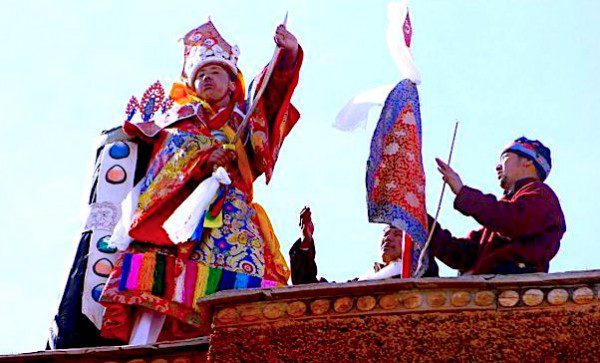
Echoes of the Aryan Bloodline: The Darchik Dilemma
The road to Darchik narrows like a memory — winding through apricot groves and steep gorges until it disappears into stone. There are no signs, no souvenirs. Just a handful of houses, and the feeling that you’ve entered a village forgotten by time — or perhaps protected by it.
Darchik is one of a few settlements in the Brokpa belt, nestled in the lower valleys of Ladakh. The people here do not look like others in the region. Lighter skin. Blue and green eyes. Flowers woven into their hair. Their festivals are pagan, their language distinct, their stories quiet but unshakable.
According to legend — and to some very confident locals — they are the last living descendants of the Aryans. Not the term hijacked by ideologues, but the older, vaguer mythos: warriors who came over the mountains millennia ago and never left. Some say they were soldiers of Alexander the Great, stranded by snow and welcomed by the valleys. Others claim even older roots — children of the sun who settled where the apricot trees could thrive.
I spoke to a man named Rigzin, who wore feathers in his turban and spoke English with a slow, deliberate rhythm. “We don’t care about DNA tests,” he said. “We are what our grandparents told us we are.”
There are tensions, too. Outsiders come seeking purity, exotica, the untouched. Some speak of selective breeding projects. Others whisper of Westerners offering money to marry local women. The government markets the “Aryan Villages” for tourism, but the villagers themselves remain cautious, even suspicious.
Still, the legend persists — not because it is proven, but because it is useful. It gives Darchik weight, a story, a line that stretches beyond the modern map. Like many Ladakhi myths, it is less concerned with truth than with identity.
I walked through the village during apricot season. Blossoms fell like soft snow. A girl no older than six ran past me with a goat on a string, her hair braided with marigolds. She didn’t look ancient. She looked alive.
The dilemma of Darchik is not whether the bloodline is real. It is whether it needs to be. When a people remember themselves into legend, who are we to disbelieve them?
Not every myth is meant to be proven. Some are simply meant to be protected — like a blossom in the dry wind, or a name that refuses to vanish.

The Fire That Spoke: Demons and Exorcisms in Kargil’s Border Villages
In the far west of Ladakh, where the landscape shifts from Buddhist to Muslim, from gompas to minarets, there are stories that travel quietly between stone houses — stories not meant for loud retelling.
In a village near the Line of Control, whose name I was asked not to print, I was told of a fire that never goes out. It appears after sunset, in abandoned homes, or beneath trees where no roots grow. It dances without fuel, speaks without words, and cannot be approached without prayer. They call it “the fire that speaks” — though no one claims to understand what it says.
I stayed with a local imam and his family. Over lentil soup and goat milk tea, I asked about the fire. The room went quiet. Then his wife, her voice brittle with caution, said: “It’s not fire. It’s presence.”
She told me about a young boy who went near it once and came back mute. Of a woman who collapsed after mocking it. Of the old man who recites verses from the Qur’an when it appears, and it retreats — but only to return elsewhere.
This is not mythology, here. It is protocol. People lock their doors not because of thieves, but because of spirits. Certain fields are left unploughed. Water sources are blessed. And when someone begins to act strangely — violent, incoherent, afraid of light — the elders call for the man with the drum.
Exorcisms here are not theatrical. There are no spinning heads or clashing crucifixes. There is rhythm. Recitation. Smoke. And time. It can take hours. Sometimes days. Sometimes it does not work at all.
I watched from a distance — not out of disrespect, but because I was told to. The afflicted girl, no older than sixteen, sat wrapped in wool. The imam’s assistant chanted from memory while a grandmother burned herbs I could not identify. The girl screamed, then whispered, then slept.
They say the spirit left her that night. I cannot confirm that. But in the morning, she smiled at me. Just once.
For European readers raised on secular logic, it is tempting to dismiss such stories. But the people of Kargil do not ask you to believe — only to not interfere. These tales are not entertainment. They are boundaries — between the known and the not-yet-understood.
Out here, evil does not always wear a face. Sometimes it flickers, quietly, in the corner of the room. And sometimes, it answers back.
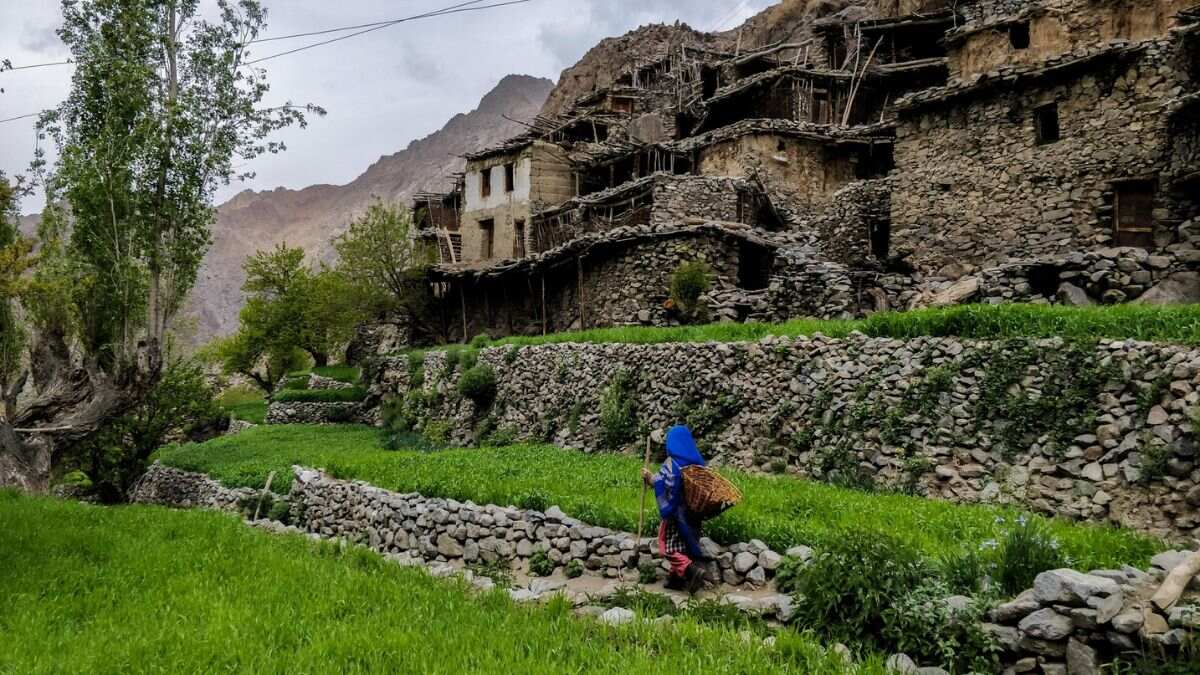
Epilogue — Stones That Remember
Ladakh is not a land that shouts. It murmurs, and only to those who linger long enough to hear.
I left the mountains in silence, the kind of silence that follows you — not as absence, but as a presence too large for words. Along my journey, I had heard stories not meant for paper: a fire that moved on its own, a girl who dreamed in futures, a beast without name, and a sky that watched. Stories told in whispers, in glances, in the quiet between breaths.
And everywhere, there were stones.
Not the dramatic monoliths of tourist brochures, but the common, overlooked stones that line paths, sit on windowsills, mark the edges of fields. They bear no carvings. They do not shine. But they feel as if they’ve listened — for centuries.
In Ladakh, stones are not just geology; they are memory made visible. They remain when people leave, when homes collapse, when roads shift. The villagers here will tell you which rock split during an earthquake, which one was once a throne for a monk, which ones should not be moved. Not because they are sacred, but because they remember.
I thought of Europe then — of cathedrals with stained glass, of old libraries, of names etched in marble. We carry memory in monuments. But Ladakh carries memory in air, in rhythm, and in rock.
The legends I collected here — if they can be called that — are not complete. They are fragments. Slivers of something older, deeper, and perhaps unknowable. But in their incompleteness lies their power. They are not stories with endings; they are invitations to remain curious.
And so, I leave you — reader, wanderer, seeker — with no answers. Only echoes. Only footprints on high passes, only shadows where someone once sat and whispered something to the wind.
Not everything in Ladakh wishes to be found. But everything remembers being seen.
Let that be enough.
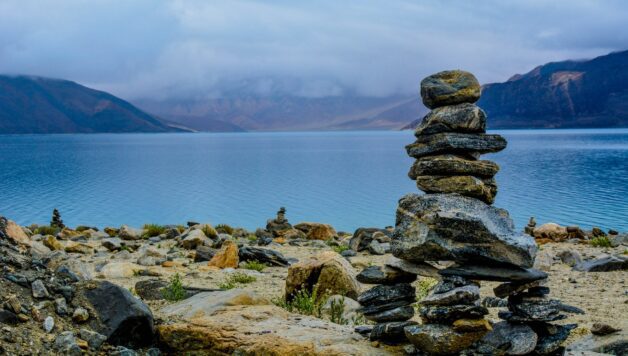
About the Author
Edward Thorne is a British travel writer and former geologist whose prose is marked by sharp observation, restrained emotion, and an unwavering devotion to the physical world.
He does not describe feelings — he describes what is seen, heard, touched. And in those descriptions, readers find the silence, awe, and disquiet of remote landscapes.
His journeys have taken him from Arctic coastlines to desert monasteries, but it is in places like Ladakh — where silence speaks more than language — that his writing finds its home.
With a background in cartography and a lifelong habit of walking alone, Thorne collects stories the way others collect stones: patiently, quietly, and with deep reverence.
He believes that myths are not meant to be explained, only heard. And that sometimes, the truest stories are the ones whispered by wind, echoed by stone, and carried across mountains.

